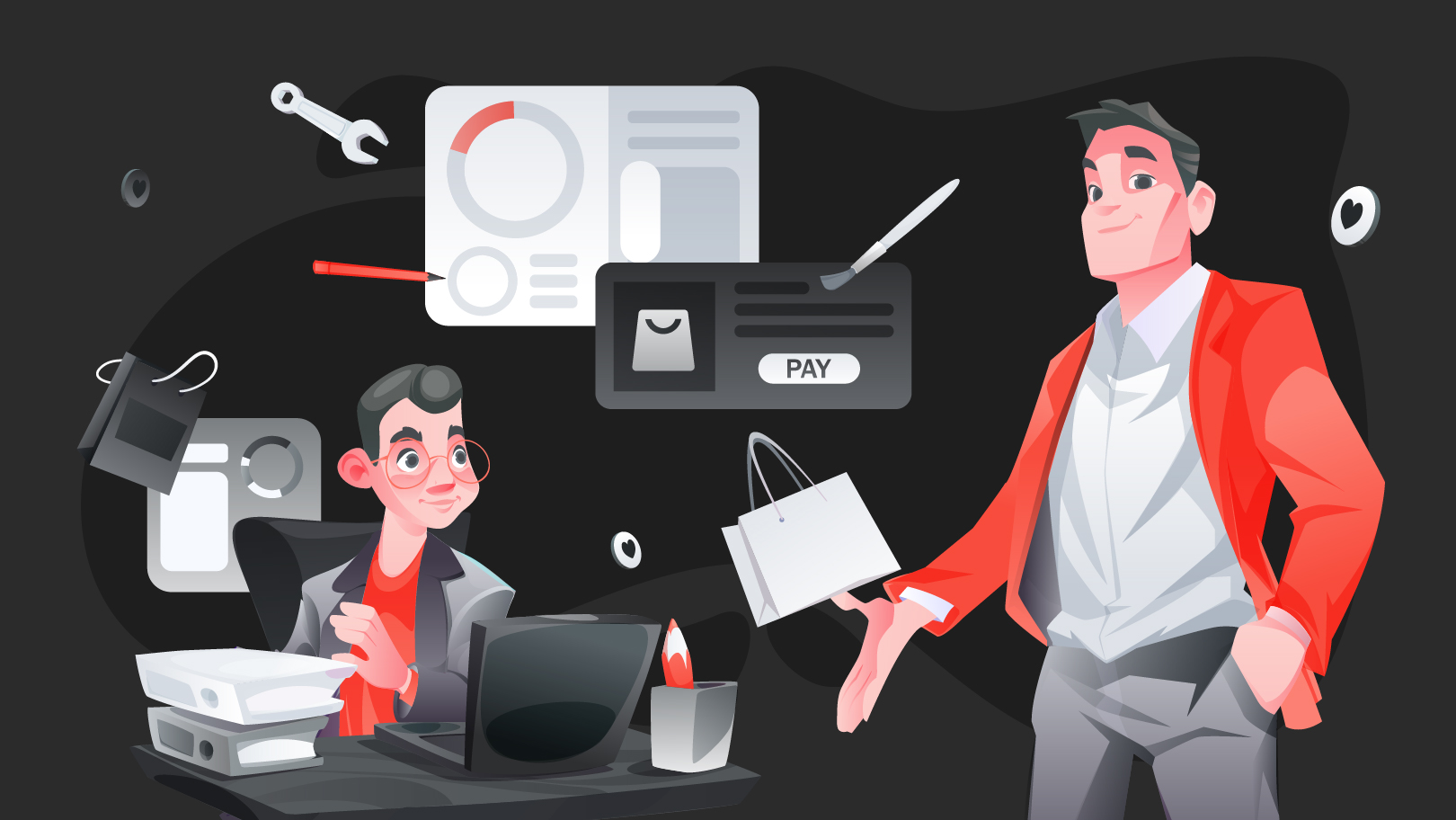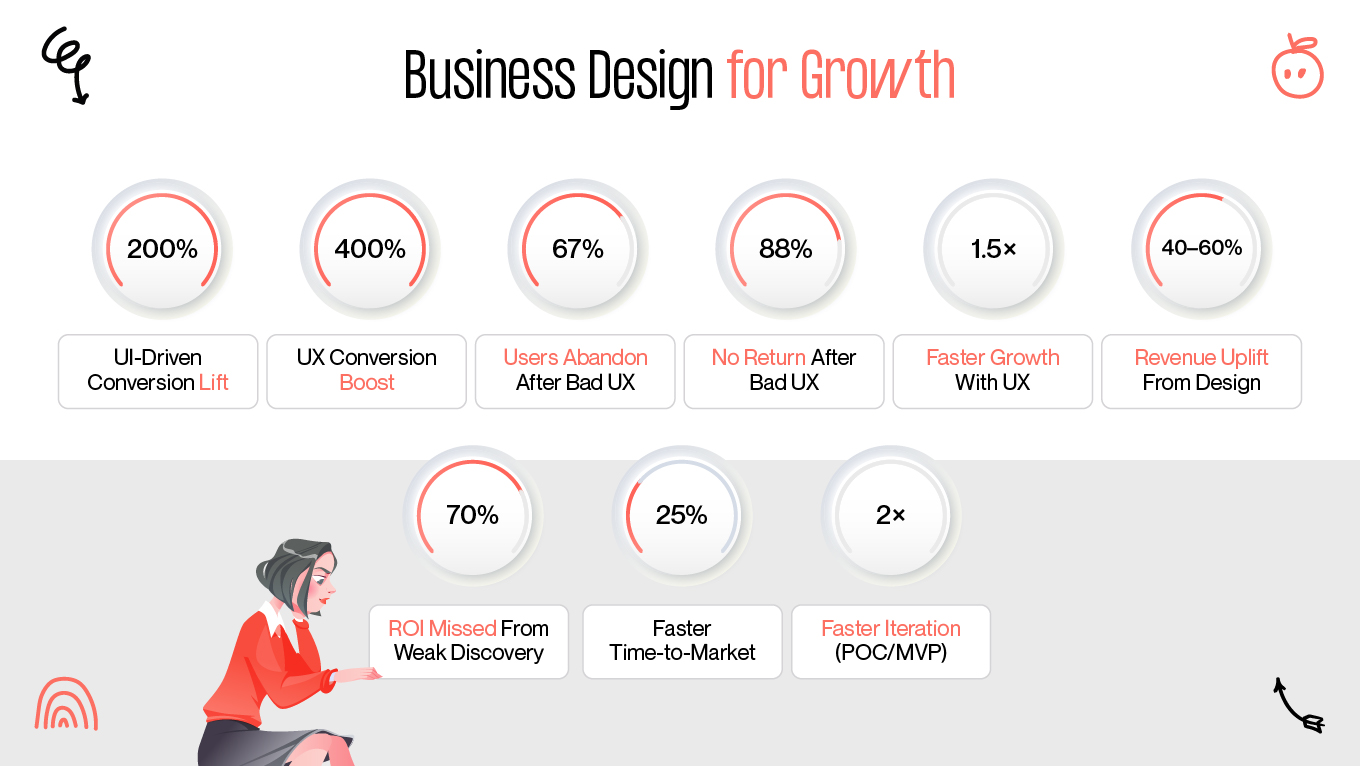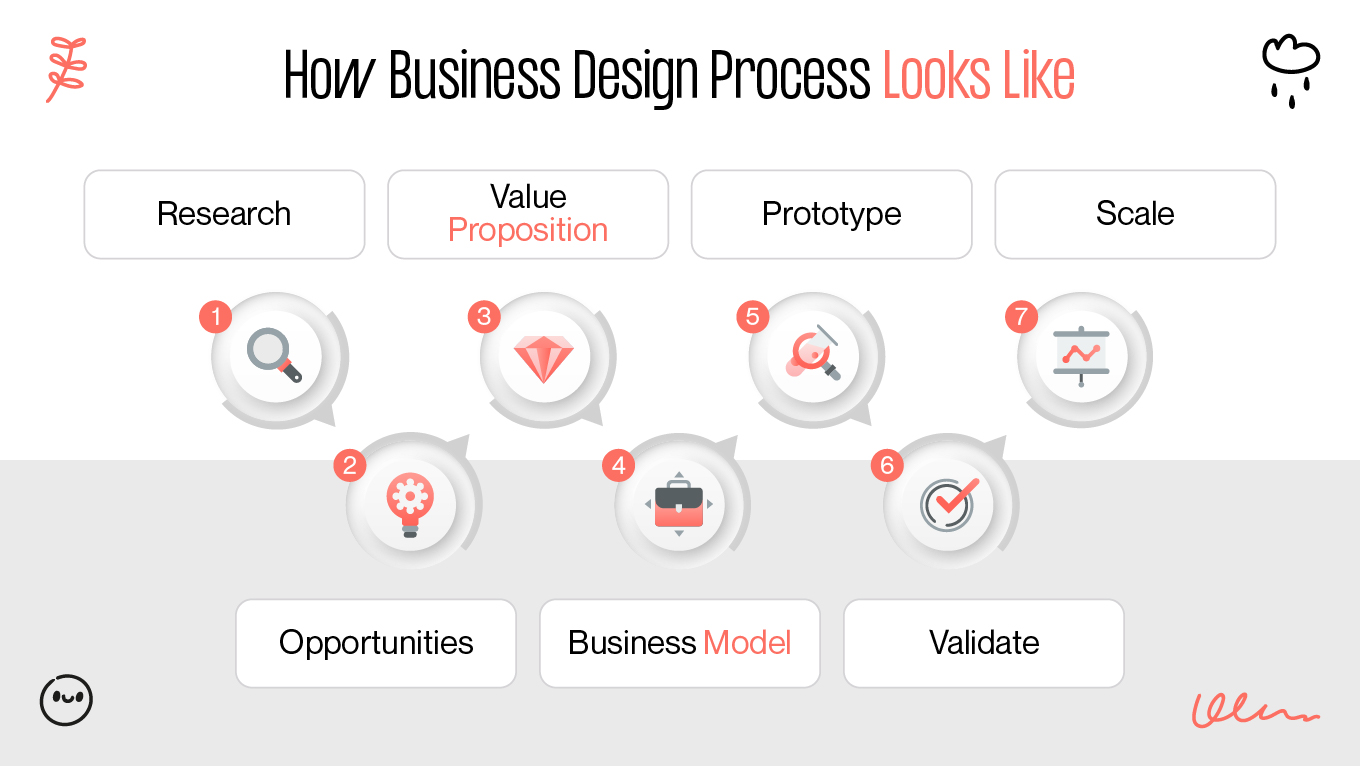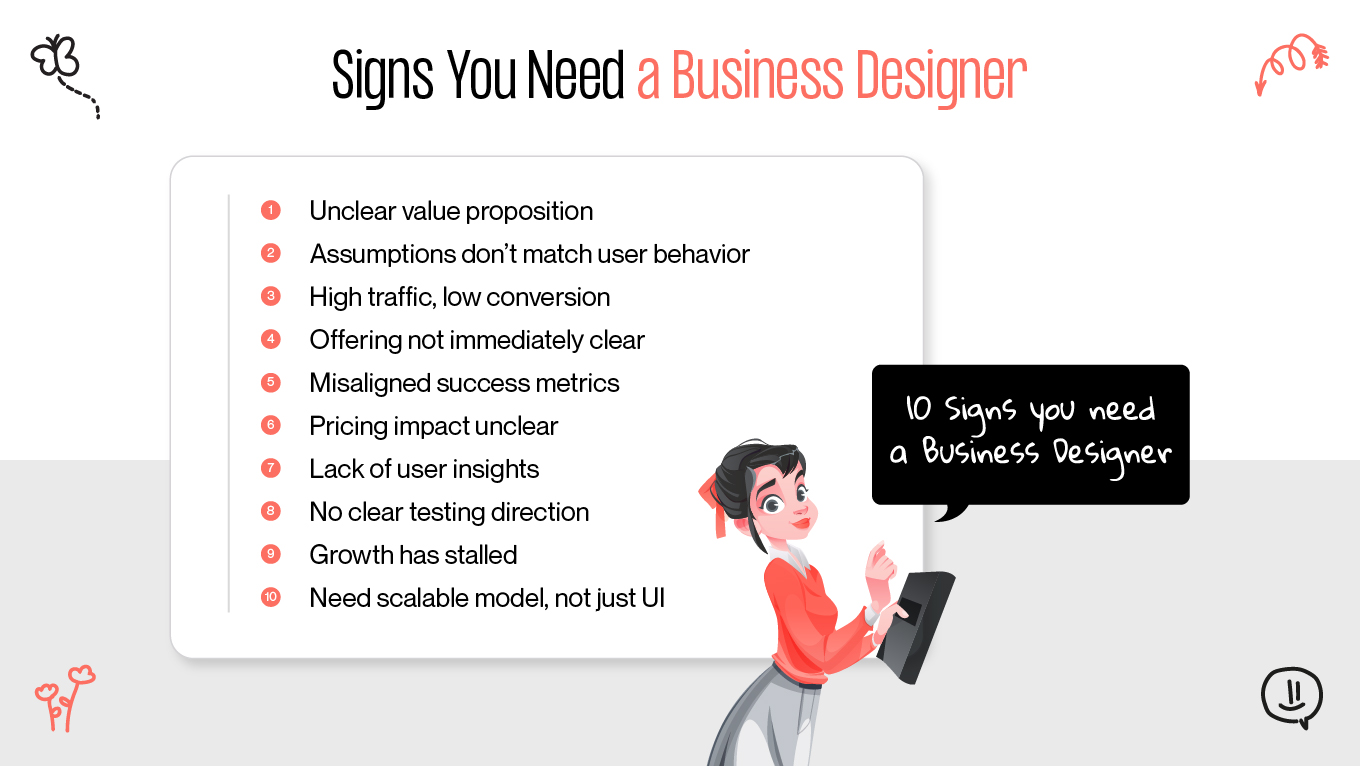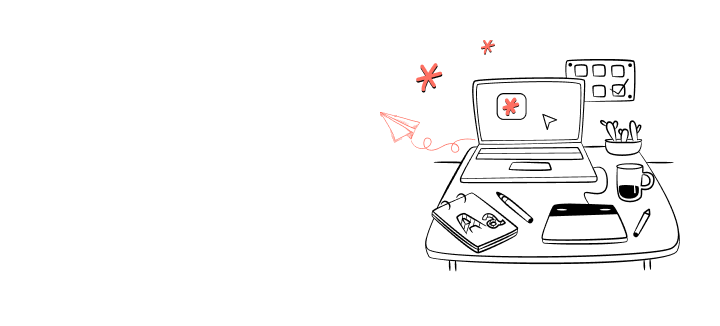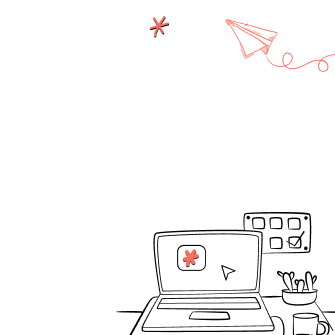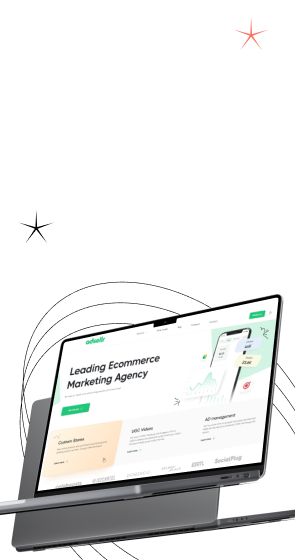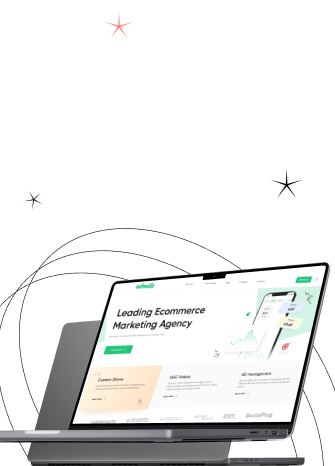A lot of teams fail because their ideas never mature into something people want and the business can sustain. McKinsey’s data makes this painfully clear: companies that embed design into their decision-making grow revenues 32% faster and see 56% higher shareholder returns.
Yet, many organizations think design serves only one purpose — a beautiful wrapper that doesn’t shape pricing, positioning, customer journeys, and revenue. This results in products that function in fragments but lack the unity and strength needed to stand out.
At Gapsy Studio, we’ve watched how things shift when design is treated as a business discipline. It leads to sharper value propositions, clearer product direction, and fewer wasted cycles. This article breaks down what a business designer actually does and why this role is becoming essential for companies that want to make smarter, faster, more informed product decisions.

